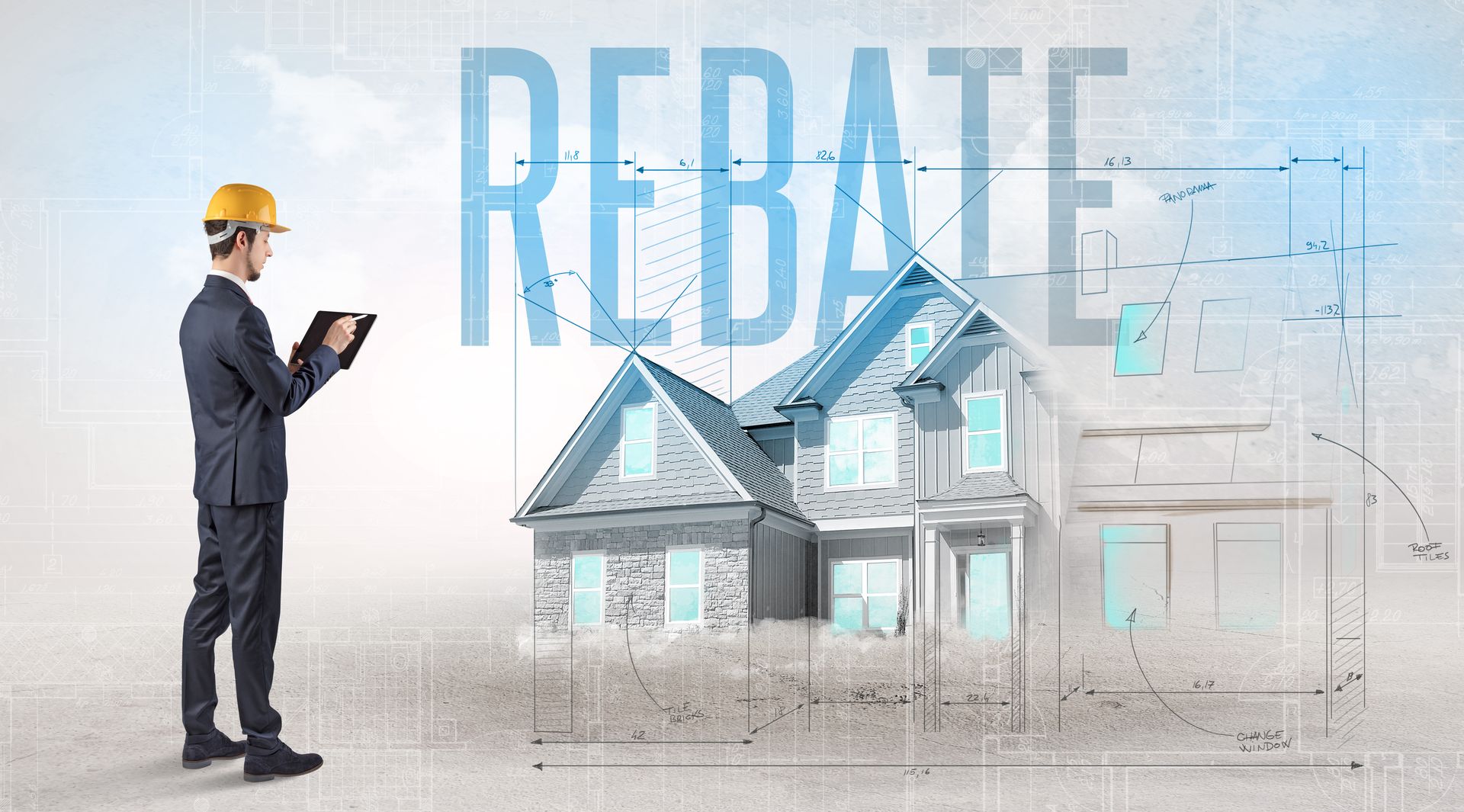As the cost of construction and new homes increases, builders are looking for ways to offset rising prices.
Utility rebate programs accomplish this in two ways. First, utility rebates can be used to collect money from state or federal agencies to fund part of a project. Secondly, these programs are designed to promote greater energy efficiency and ensure proper regulatory compliance, saving you money on your project.
From builder to end-user, utility rebates and incentives promote sustainability, lower costs, and incentivize higher construction standards.
Let’s explore some common utility rebate programs available that can help you save money and build better energy-efficient homes.
Types of Utility Rebate Programs
Several energy rebates are available to builders thanks to new laws, such as the Inflation Reduction Act. We’ve broken down some of the most common rebates that any builder or homeowner can use.
Energy-Efficient Appliances and Equipment
EnergyStar appliances, especially anything powered by heated pumped or forced cool air, are eligible for a myriad of energy rebates and incentives. Some common rebates available to states under the Inflation Reduction Act include:
- $840 for an EnergyStar electric heat pump clothes dryer
- $840 for an EnergyStar electric stove and oven
- $1,750 for an EnergyStar electric heat pump water heater
- $8,000 for an EnergyStar electric heat pump space heater/air conditioning
Solar and Renewable Energy
Solar panels and other renewable energy solutions have become increasingly popular in construction, thanks to luxurious incentives from state and federal governments.
While federal tax credits are available to homeowners, many rebate programs are state-focused. Currently, 20 states offer solar rebates or incentives for home builders.
The NY-Sun Megawatt (MW) Block Program allows a $1,000 rebate for every kilowatt of solar power installed. Cities like Philadelphia offer a $200 rebate for the same amount saved.
HVAC Systems and Insulation
Builders can qualify for rebates by installing high-efficiency HVAC systems and proper insulation, such as the Rheia system, which makes them eligible for the 45L tax credit.
Many companies offer energy-efficient HVAC systems designed to meet CEE standards, which come with manufacturer rebates of up to $2450 for select appliances and make builders eligible for the 25C tax credit.
Water Conservation Technologies
Water scarcity is a global concern, and builders can address this issue by adopting water conservation technologies. Rebate programs encourage the use of low-flow plumbing fixtures, rainwater harvesting systems, and smart irrigation solutions, helping builders contribute to water conservation efforts.
Programs like the EPA’s WaterSense offer small rebates to builders who buy water-conservation products with the WaterSense logo on them.
Examples of Regional Utility Rebate Programs
While the federal government is active in encouraging the use of energy-efficient technology, most incentives on the federal level comprise tax credits.
Instead, many utility rebate programs are regionally tiered and incredibly diverse. Here are a few examples of popular utility rebate programs that states have successfully employed.
Duke HERO Program
The Duke HERO program of North Carolina offers a $750 whole house rebate when you meet NCECC HERO standards. However, when builders sign up for the HERO + HERS complete testing, they can qualify for up to $9,000 in rebates, calculated by kilowatt hour savings.
Savings are calculated at $0.90/kWh and capped at 10,000 kWh. To qualify, homes must achieve at least a 4 AC50 on a blower door test and 4% or less duct leakage on a duct blaster test.
PPL New Homes Program
PPL of Pennsylvania offers a program similar to the Duke HERO with up to $4500 in rebates for new homes that meet program requirements. Rebates are calculated based on kWh savings of 30-35¢ per kWh for builders who save up to 15% on energy use above code. The 2018 IECC is used as code minimum requirements to compare energy savings.
Public Service Company of Oklahoma (PSO)
PSO offers up to $5,000 in rebates through various upgrades to create an energy-efficient home, including appliances, HVAC equipment, and more. Rebates are calculated based on PSO guidelines. Homes are tested to meet these guidelines using HERS ratings, duct pressure testing, thermal bypass inspections, and more.
Eligibility and Application Process
To participate in utility rebate programs, builders must meet specific eligibility criteria and follow application procedures. These criteria may vary based on location, technology, and project size. Generally, builders need to provide project details, demonstrate the intended energy savings, and submit the necessary paperwork to apply for rebates.
Finding new ways to save money is always on our minds, especially as the housing market becomes increasingly volatile. These utility rebate programs will ensure your new builds are built to spec, sustainable, and save you money. Work with an energy consultant for more ways to save.
FAQs
What are utility rebate programs for builders?
Utility rebate programs for builders are incentives offered by utility companies or government agencies to encourage the construction of energy-efficient and environmentally friendly buildings. These programs aim to promote the use of energy-saving technologies and practices in new construction projects.
What types of projects are eligible for utility rebates?
Utility rebates are typically available for various construction projects, including residential, commercial, and industrial buildings. These programs may cover various aspects of a project, such as insulation, HVAC systems, lighting, windows, and renewable energy installations.
What are the benefits of participating in utility rebate programs?
Participating in utility rebate programs offers several benefits to builders. These benefits include financial incentives that can offset initial construction costs, increased marketability of energy-efficient buildings, reduced energy expenses for building owners, and a positive contribution to environmental sustainability.
Are utility rebates available nationwide?
Utility rebate programs are available in many regions across the country, but the availability, offerings, and eligibility criteria can vary significantly from one location to another. It’s important for builders to research and identify the specific programs that apply to their construction projects.


